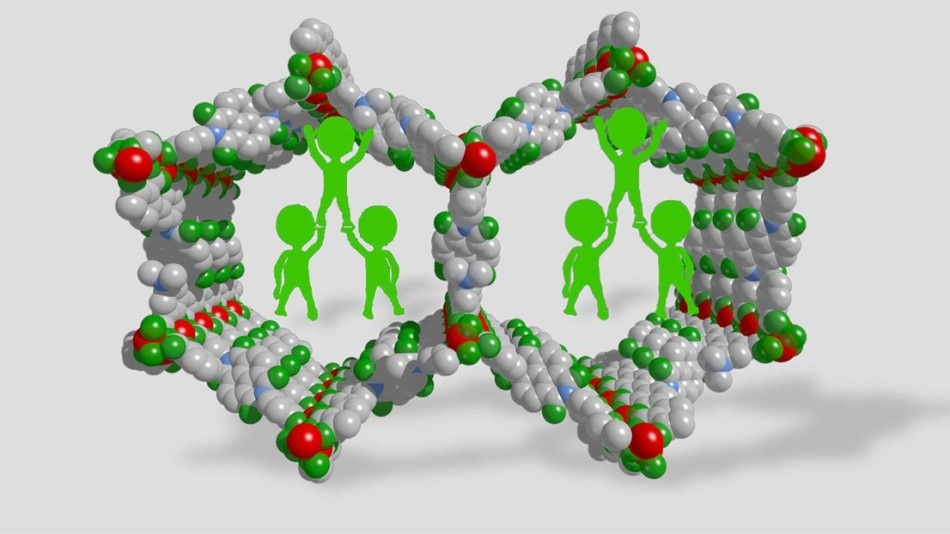Jul 23 2019
Metal-organic frameworks (MOFs) are an exclusive group of sponge-like materials with nano-sized pores. The nanopores result in record-breaking internal surface areas, up to 7800 m2 in a single gram.
 Polymer braces, placed inside large-pore MOFs, help to inhibit the collapse of the framework. (Image credit: Li Peng (EPFL))
Polymer braces, placed inside large-pore MOFs, help to inhibit the collapse of the framework. (Image credit: Li Peng (EPFL))
This feature makes MOFs highly versatile materials with numerous uses, such as imitating DNA, splitting petrochemicals and gases, hydrogen manufacture, and eliminating fluoride anions, heavy metals, and even gold from water—to quote a few examples.
Pore size is one of the main features. MOFs—and other porous materials—are categorized according to the diameter of their pores: MOFs with pores up to 2 nm in diameter are referred to as “microporous”, and anything above that is referred to as “mesoporous”. Most present-day MOFs are microporous, so they are not beneficial in applications that require them to trap large molecules or catalyze reactions between them—essentially, the molecules do not fit the pores.
So of late, mesoporous MOFs have entered the picture, as they display a lot of potential in large-molecule applications. Still, they are not trouble-free: when the pore sizes get into the mesoporous regime—they are susceptible to collapse. Justifiably, this decreases the internal surface area of mesoporous MOFs and, with that, their general practicality. Since a huge focus in the field is detecting ground-breaking ways to maximize MOF surface areas and pore sizes, resolving the collapsing issue is number one priority.
Presently, Dr Li Peng a postdoc at EPFL Valais Wallis has solved the issue by incorporating small quantities of a polymer into the mesoporous MOFs. Since the polymer pins the MOF pores open, adding it drastically enlarged accessible surface areas from 5 to 50 times. The research was directed by the research group of Wendy Lee Queen, in collaboration with the labs of Berend Smit and Mohammad Khaja Nazeeruddin at EPFL’s Institute of Chemical Sciences and Engineering (ISIC).
After incorporating the polymer to the MOFs, their crystallinity and high surface areas were maintained even after heating the MOFs at 150 °C—temperatures that would earlier be unattainable because of pore collapse. This new stability offers access to several more open metal coordination sites, which also boosts the reactivity of the MOFs.
In the research, published in the Journal of the American Chemical Society, two PhD students, Sudi Jawahery and Mohamad Moosavi, use molecular reproductions to explore why pores fail in mesoporous MOFs in the first place, and also suggest a mechanism to explain how polymers steady their structure on a molecular level.
We envision that this method for polymer-induced stabilization will allow us to make a number of new mesoporous MOFs that were not before accessible due to collapse. Hence, this work can open up new, exciting applications involving the separation, conversion, or delivery of large molecules.
Wendy Lee Queen, Study Lead, EPFL